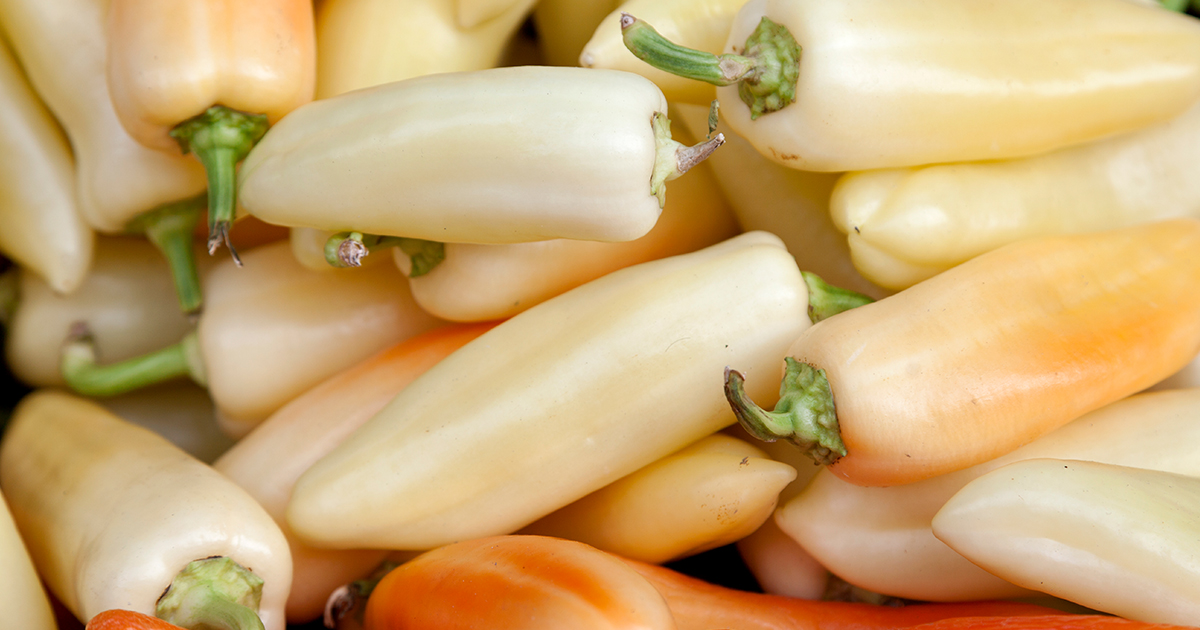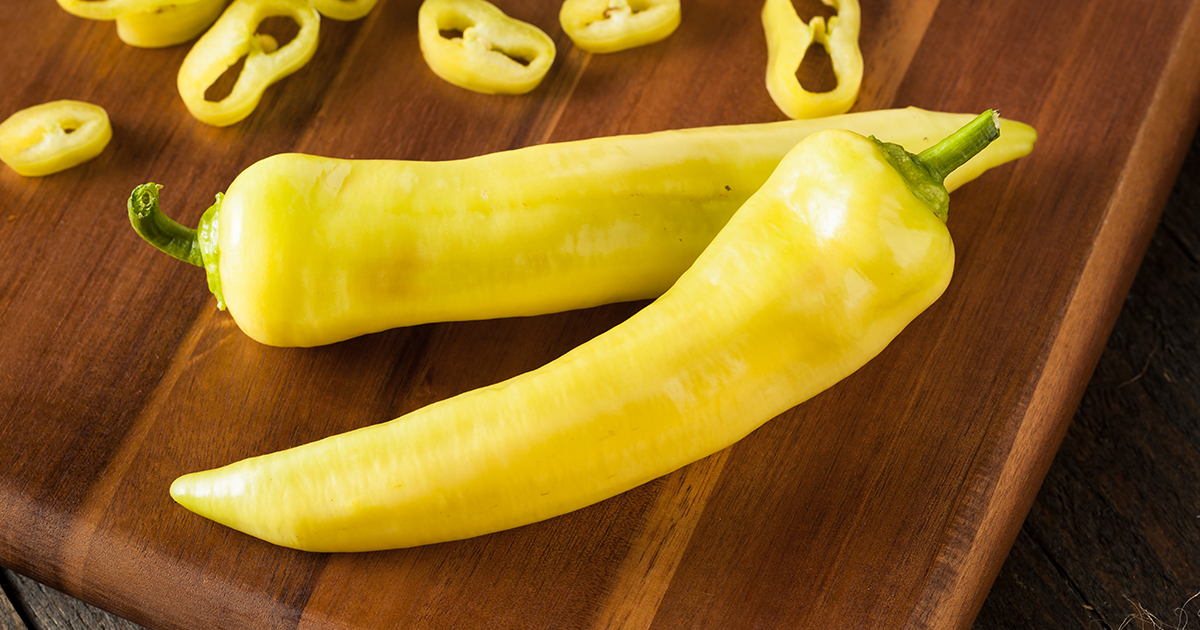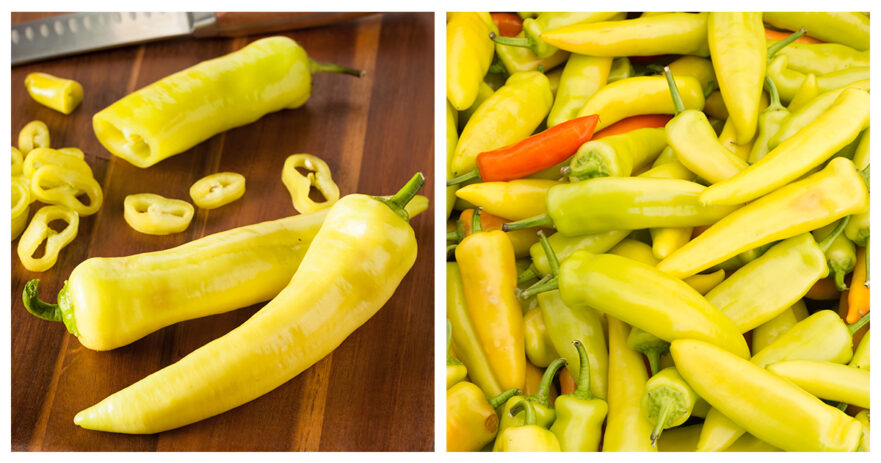Peppers are a fundamental ingredient in countless cuisines worldwide, adding flavor, color, and a hint of spice. Two of the most beloved chili peppers, Hungarian Wax Pepper and Banana Pepper, are widely used in various dishes. This article will compare and contrast these two types of peppers, including their heat levels, flavors, uses, and nutritional values, so you can decide when to use which pepper for your next culinary creation.
Table of contents
What are Hungarian Wax Peppers?

Hungarian Wax Peppers are a popular type of chili pepper widely used in different cuisines worldwide. These peppers originated in Hungary and are a variety of Capsicum annuum, the same species as jalapenos and bell peppers. They are easily identified in the produce aisle due to their elongated shape and bright yellow color.
The heat level of Hungarian Wax Peppers is one of their distinguishing characteristics. They are hotter than banana peppers but milder than habaneros, with Scoville ratings ranging from 1,000 to 15,000. Because of their low heat level, they are a popular choice for those who want a little spice without overwhelming their taste buds.
Hungarian Wax Peppers are common in pickling and dishes like goulash, porkolt, and stuffed peppers. However, they are also widely used in Mexican cuisine, often added to salsa, guacamole, and other spicy dishes. Additionally, Hungarian Wax Peppers are used in various cuisines worldwide, including Italian, Greek, and Thai, adding a unique flavor and heat to these dishes.
Hungarian Wax Peppers are quickly becoming a go-to ingredient for chefs and home cooks alike. Their unique flavor, heat level, and availability in supermarkets and farmers’ markets make them the perfect choice for any recipe! Hungarian Wax Peppers are definitely worth trying if you like spicy foods or want to add a little heat to your favorite dishes.
What are Banana Peppers?

The Banana Pepper, named for its thin, banana-like shape, is thought to have originated in South America.
Banana peppers are the perfect choice for those who fancy a milder taste, with their Scoville rating ranging from 0 to 500. They can be found in various Italian, Greek and Mexican dishes.
In Italian cooking, banana peppers are a popular addition to antipasto platters, pizzas and pasta salads. Greek cuisine incorporates them as a meze or side dish while they also feature in gyros and souvlaki dishes. Furthermore, Mexican cooking has embraced them for use in their salsas and guacamoles – adding an extra hint of flavor to the popular specialties!
Whether freshly picked or pickled, Banana Peppers add a delightful flavor to any dish. For an extra special treat, stuff them with cheese, meat and/or rice before baking for a scrumptious appetizer that’s sure to please!
What are the similarities between Hungarian Wax Peppers and Banana peppers?
Hungarian Wax Peppers and Banana peppers share several similarities.
To begin with, each pepper has its own unique flavor that can add complexity and depth to food. Banana peppers provide a delightful combination of sweetness and tartness ideal for sandwiches, salads or pizzas. On the other hand, Hungarian Wax Peppers give salsas, marinades, and stir-fries a light, fruity taste. These distinct flavors can be used in various recipes, making them extremely versatile additions to any kitchen!
Furthermore, both of these peppers are simple to grow, making them accessible to both growers and consumers. They require little care, whether grown in a garden or pot, so they are popular among novice cultivators. Aside from that, their long shelf life makes them an ideal ingredient to keep in your kitchen at all times!
Hungarian Wax Peppers and Banana Peppers add a unique flavor to your dishes while making them visually appealing due to their vibrant colors. The Hungarian Wax Pepper is bright yellow when unripe but turns red-orange when fully ripe, adding an eye-catching pop of color. Meanwhile, the Banana pepper has a light green hue when unripe before turning yellow, orange, or red when fully ripe, making it appealing for garnishing and adding visual appeal to any dish.
What are the differences between Hungarian Wax Peppers and Banana peppers?
In terms of heat, there are no two peppers more dissimilar than Hungarian Wax Peppers and Banana Peppers. Scoville ratings can be used to compare their pungency; 1,000-15,000 for Hungarian Wax vs. 0-500 for Banana, making the former ideal for those who prefer spicier flavors while leaving plenty of room on your palate for milder ones!
Banana peppers have a sweet and tangy flavor profile, whereas Hungarian Wax Peppers have a more subtle yet fruity flavor. This makes them the perfect fit for any variety of dishes or cuisines. Furthermore, Hungarian Wax Peppers are typically a bit larger and have thicker skin than banana peppers, which may affect the texture of the dish you’re preparing.
In addition to their heat level and flavor profile, there are a few other differences. For example, Banana Peppers are shorter and thicker than Hungarian Wax Peppers, which are longer and thinner. When using peppers in recipes, this can affect how you slice or chop them.
Another distinction is their ripeness. While both peppers start green, Hungarian Wax Peppers ripen from yellow to orange to red. On the other hand, Banana peppers are typically harvested when they are yellow and are not allowed to ripen further. As a result, Hungarian Wax Peppers have a longer growing season and may be more difficult to find in some areas.
FAQ about Hungarian wax peppers and banana peppers
Are Hungarian Wax Peppers hotter than Banana Peppers?
Yes, Hungarian Wax Peppers are hotter than Banana Peppers. Hungarian Wax Peppers have a Scoville rating of 1,000 to 15,000, whereas Banana Peppers have a Scoville rating of 0 to 500.
What are the flavor profiles of Hungarian Wax Peppers and Banana Peppers?
Banana Peppers have a sweet and tangy flavor, whereas Hungarian Wax Peppers have a slightly fruity flavor. The difference in flavor makes them suitable for many dishes and cuisines.
How are Hungarian Wax Peppers and Banana Peppers used in cooking?
Both peppers can be used in various dishes and cuisines. Both peppers are versatile ingredients for many dishes and cuisines. Banana Peppers are popular in Italian, Greek, and Mexican cuisines, while Hungarian Wax Peppers are popular in Hungarian and Mexican cuisines. Hungarian Wax Peppers are popular in salsas, marinades, and stir-fries, whereas Banana Peppers are popular in antipasto platters, pizzas, and pasta salads.
Can Hungarian Wax Peppers and Banana Peppers be grown at home?
Yes. Both peppers are relatively simple to grow in gardens or pots. In addition, these plants require little maintenance, making them an excellent choice for beginning gardeners.
What popular dishes use Hungarian Wax Peppers and Banana Peppers?
Hungarian Wax Peppers are essential in many Hungarian dishes, including stuffed peppers, goulash, porkolt, and paprikash. Their vibrant flavor enhances many of our favorite dishes today. They are also used in Mexican dishes such as chile rellenos and enchiladas. Banana peppers are commonly used in pizza and sandwiches in Italian cuisine. Banana peppers are commonly used in Greek cuisine salads, sandwiches, and meze dishes.

